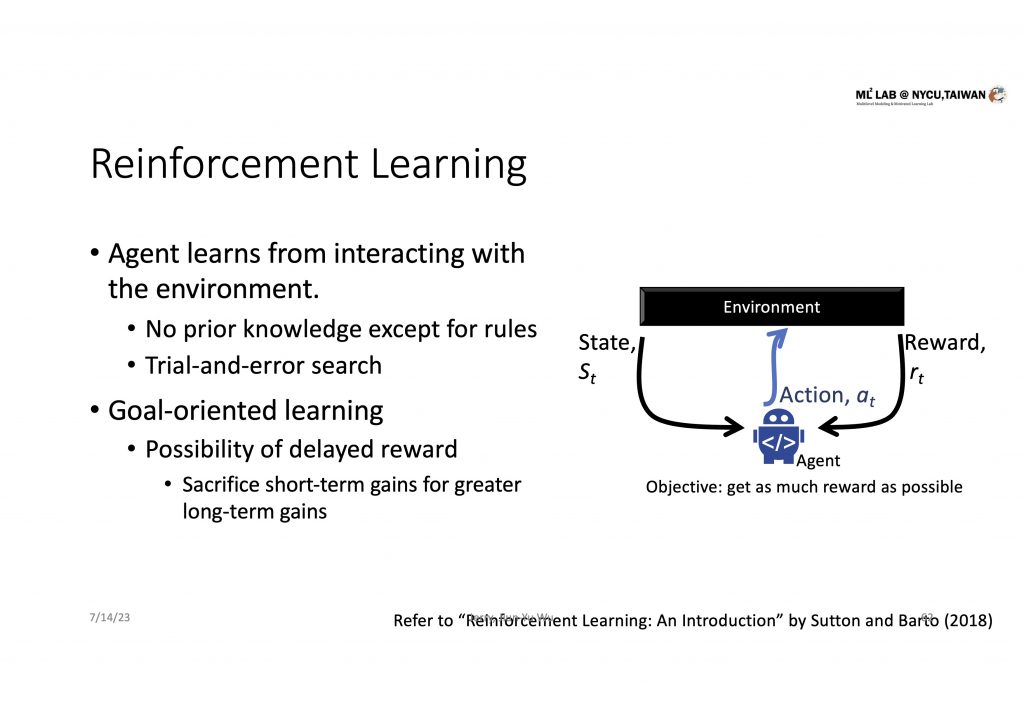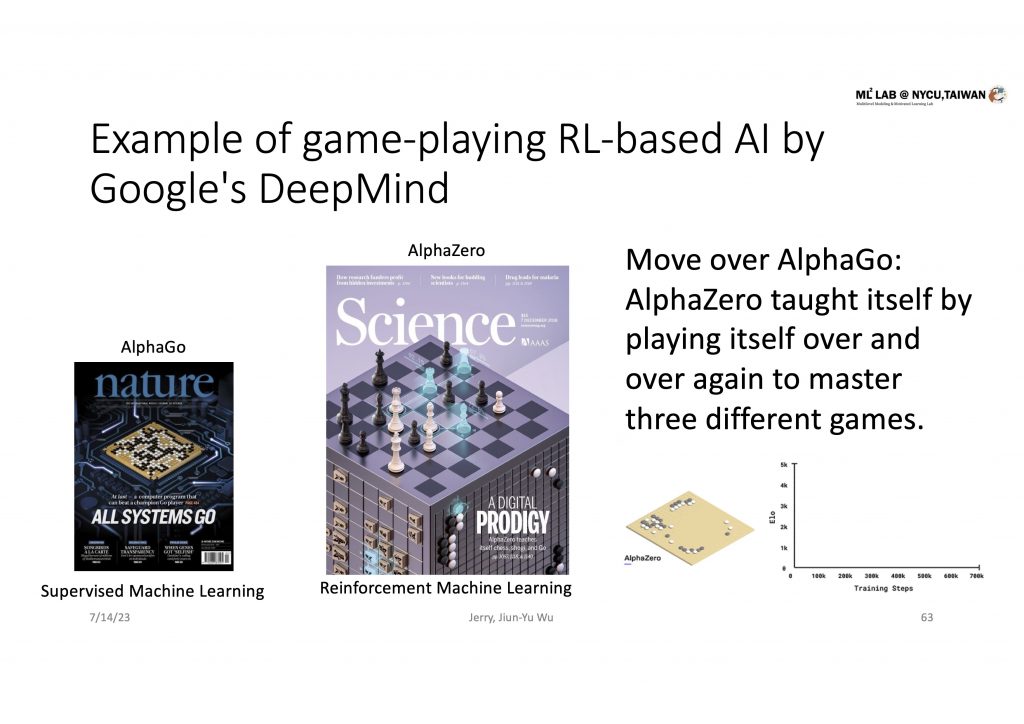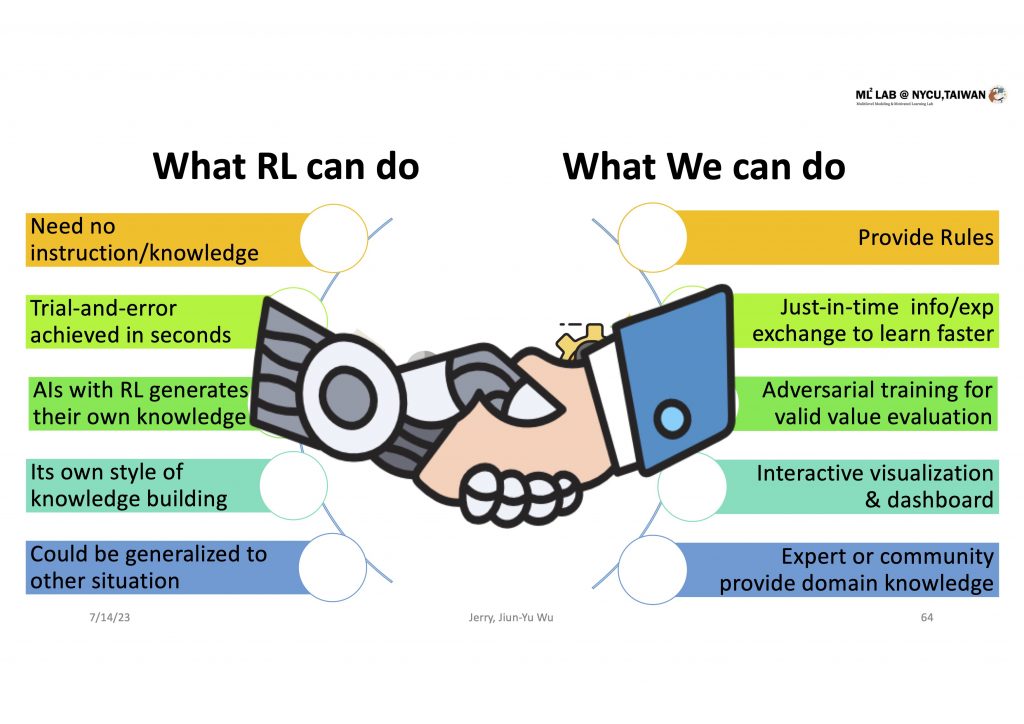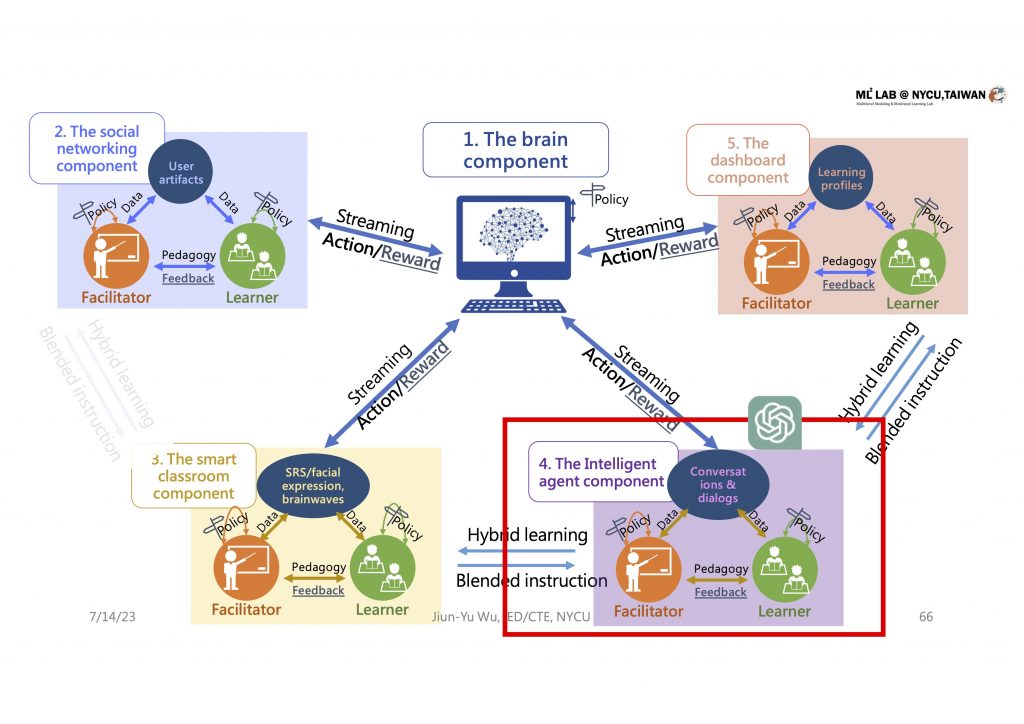Wu, J.-Y.*, Yang, C.C.Y., Liao, C.-H.† , & Nian, M.-W.† (2021).Analytics 2.0 for precision education: An integrative theoretical framework of the human and machine symbiotic learning. Educational Technology & Society, 24(1). (SSCI: 2021 IF: 2.633, Q2)
– Special Issue on “Precision Education – A New Challenge for AI in Education.”
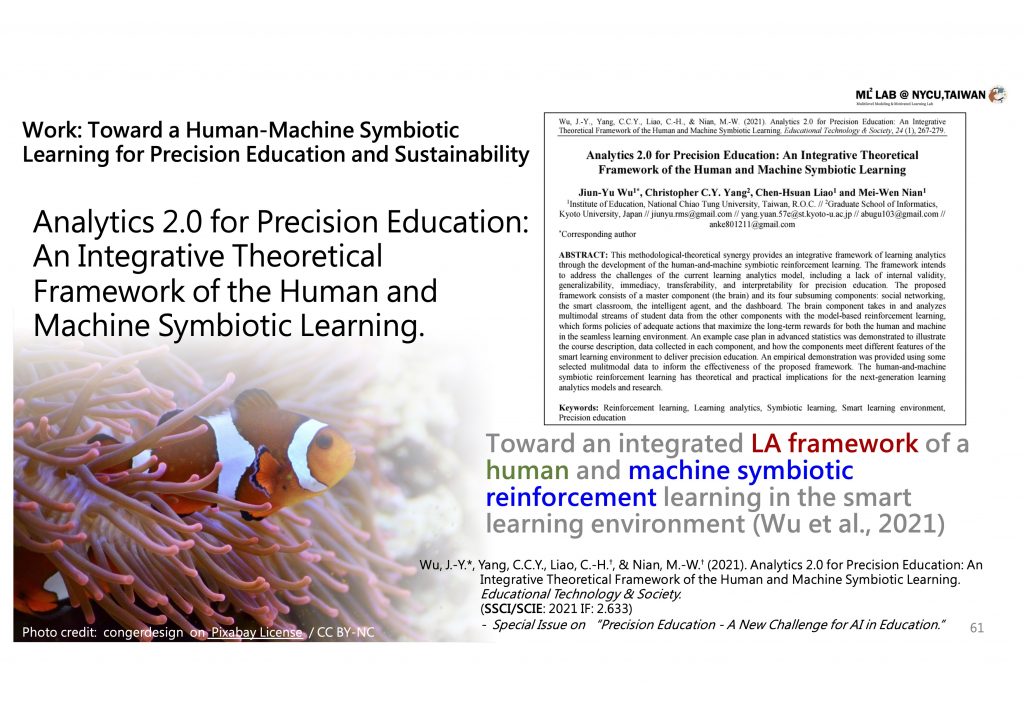
ABSTRACT
This methodological-theoretical synergy provides an integrative framework of learning analytics through the development of human-and-machine symbiotic reinforcement learning. The framework intends to address the challenges of the current learning analytics model, including a lack of internal validity, generalizability, immediacy, transferability, and interpretability for precision education. The proposed framework consists of a master component (the brain) and its four subsuming components: social networking, the smart classroom, the intelligent agent (e.g., ChatGPT), and the dashboard. The brain component takes in and analyzes multimodal streams of student data from the other components with model-based reinforcement learning, which forms policies of adequate actions that maximize the long-term rewards for both the human and machine in the seamless learning environment. An example case plan in advanced statistics was demonstrated to illustrate the course description, data collected in each component, and how the components meet different features of the smart learning environment to deliver precision education. An empirical demonstration was provided using some selected multimodal data to inform the effectiveness of the proposed framework. The human-and-machine symbiotic reinforcement learning has theoretical and practical implications for the next-generation learning analytics models and research.
Keywords: Reinforcement learning, Learning analytics, Symbiotic learning, Smart learning environment, Precision education
摘要
這篇方法論與理論融合之作創新地提出透過發展人機共生強化學習來整合下一代的學習分析框架,達成優質教育的永續目標。該框架旨在解決當前學習分析模型所面臨的挑戰,包括缺乏內部有效性、泛用性、即時性、可轉移性,也缺乏可用於發展精確教育的可解釋性。本論文所提議的框架是由一個主要元件(大腦中樞)和其四個隸屬元件組成:社交網絡、智慧教室、智慧代理人(e.g., ChatGPT等聊天機器人等),以及數位儀表板。大腦中樞元件採用基於模型的強化學習,從其他元件接收並分析學生的多模態大數據資料,形成適當的行為策略,以便在無縫學習環境中最大化人類和機器共生的長期獎勵。本論文並以一個創新的統計混成課室現場教學規劃來說明人機共生強化學習在課程中實踐的樣態。對應所提出的每個元件中收集的數據,我們展示了如何使元件符合智慧學習環境的不同特性,如何提供學習者個人化學習介入。我們呈現了現場教學所搜集的多模態數據,並提供了人機共生強化學習學習分析模型的實證演示,以證據為本的說明下一代學習分析框架的內部有效性、泛用性、即時性、可轉移性,以及可用於發展精確教育的可解釋性。最後,我們討論了人機共生強化學習對下一代學習分析模型和研究,學習理論突破和現場教學深耕的卓越意義。
關鍵詞:強化學習,學習分析,共生學習,智慧學習環境,精準教育。

